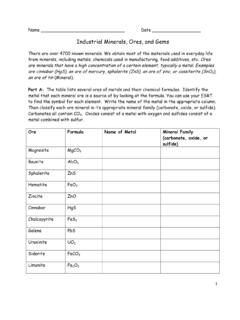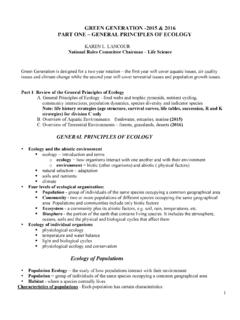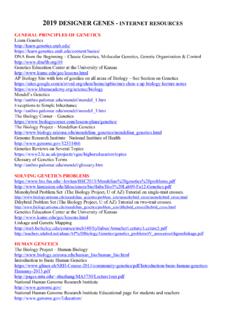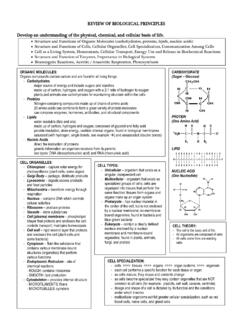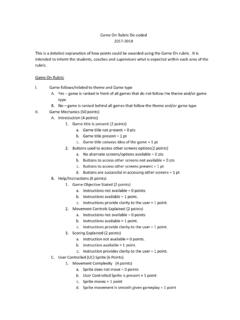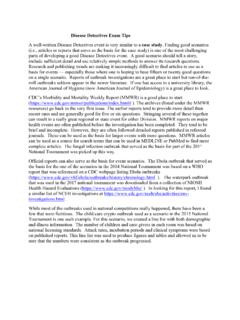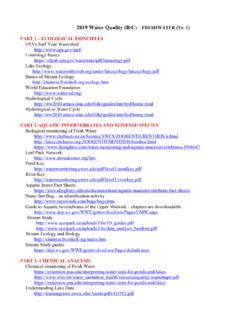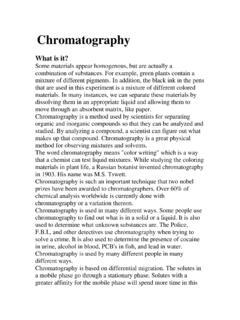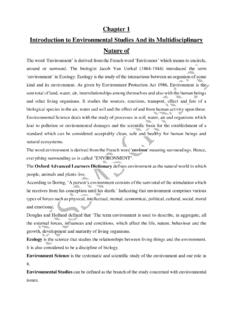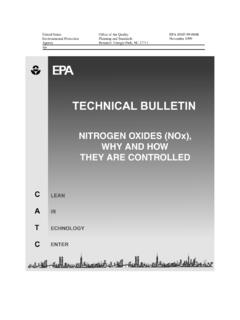Transcription of The Integumentary System Training Handout
1 1 The Integumentary System - Training Handout Karen L. Lancour National Rules Committee Chairman Life Science The Integumentary System consists of the skin, hair, nails, the subcutaneous tissue below the skin, and assorted glands. Functions of the Integumentary System Protection against injury and infection Regulates body temperature Sensory perception Regulates water loss Chemical synthesis Protection covers and protects the entire body against injury and infection Physical barriers - continuity of the skin and hardness of keratinzed cells Due to the skin s physical characteristics such as the keratinized cells and waterproofing properties of the glycolipids. Keratin helps waterproof the skin and protects from abrasions and bacteria Glycolipids prevent diffusion of water and water-soluble substances between cells Continuity prevents bacterial invasion Substances that are able to penetrate the skin: Lipid-soluble substances ( , oxygen, carbon dioxide, steroids, and fat-soluble vitamins) Oleoresins of certain plants (ex.)
2 Poison ivy and poison oak) Organic solvents (ex. acetone, dry cleaning fluid, and paint thinner) Salts of heavy metals (ex. lead, mercury, and nickel) Topical medications as motion sickness patch Penetration enhancers Chemical barriers - (skin secretion and melanin) Skin secretions such as sebum, human defensins (antimicrobial peptides), acid mantle of the skin retards bacteria growth and/or kills them Melanin provides protection from UV damage 2 Skin secretions (acid mantle) Low pH and sebum slow bacterial growth on skin surface Human defensin natural antibiotic Cathelicidins proteins that prevent Strep A infection in wounded skin Melanin chemical pigment that prevents UV damage Biological Barriers Langerhans cells, macrophages, and DNA Langerhans cells in epidermis present antigens to lymphocytes Dermal macrophages (2nd line of defense)
3 Attack bacteria and viruses that have penetrated the epidermis Langerhan s cells and macrophages present in the skin helps activate the body s immune System . DNA structure the electrons in DNA absorb UV radiation and converts it to heat Temperature regulation Production of copious amounts of sweat to dissipate heat When body temperature rises and is hotter than the external environment the blood vessels in the dermal area dilates and sweat glands are stimulated into activity. Evaporation of the sweat from skin s surface helps dissipate heat from the body. Constriction of dermal blood vessels to retain heat When it is cold outside, the dermal blood vessels constrict and pull the blood away from the skin and keeps it close to the body core to protect crucial internal organs. Cutaneous Sensations - cutaneous sensory receptors (see - nervous System ) Meissner s corpuscles: light touch Merkel discs: light touch Pascinian receptors lies in deeper dermis/hypodermis & detect deep pressure contacts Hair root plexus: sensations from movement of hairs Hair follicle receptors movement across the surface of the skin Bare nerve endings: painful stimuli (chemicals, heat, cold) Excretion/Absorption Elimination of nitrogen-containing wastes (ammonia, urea, uric acid), sodium chloride, and water.
4 It regulates water loss Metabolic Functions Synthesis of Vitamin D increases calcium absorption in the body Vitamin D is a fat-soluble vitamin that may be absorbed from the intestines or may be produced by the skin when the skin is exposed to ultraviolet light (particularly sunlight).It is converted to its active form by the body in 2 steps, occurring first in the liver and completed in the kidneys. In its active form, vitamin D acts as a hormone to regulate calcium absorption from the intestine and to regulate levels of calcium and phosphate in the bones. Vitamin D deficiency causes Rickets When the body is deficient in vitamin D, it is unable to properly regulate calcium and phosphate levels. If the blood levels of these minerals becomes low, the other body hormones may stimulate release of calcium and phosphate from the bones to the bloodstream.
5 Chemical conversion of many substances Blood Reservoir preferential shunting of blood as needed 3 Types of Membranes - thin sheet-like structures that protect parts of the body Serous Membranes Line body cavities that have no opening to the outside Secrete a watery fluid called serous fluid that lubricates surfaces. Mucous Membranes Line cavities and tubes that open to the outside Synovial Membranes Form the inner lining of joint cavities Secrete a thick fluid called synovial fluid Cutaneous Membrane also known as skin 4 Characteristics of Skin The integument covers the entire body and is the largest organ ~ 2 meters and heaviest organ 16% of body mass of the body. Composed of the epidermis and dermis Pliable, yet durable Thickness: to mm Types of Skin Thin - 1-2 mm on most of the body and mm in eyelids Hairy Covers all parts of the body except palms of hands and soles of feet Thin epidermis and lacks stratum lucidum Lacks dermal papillae Has more sebaceous glands Fewer sweat glands, sensory receptors than thick skin Thick - up to 6 mm thick on palms of hands and soles of feet Hairless Covers palms of hands and soles of feet Thick epidermis and a distinct stratum lucidum Epidermal ridges are present due to well-developed, numerous dermal papillae.
6 Lacks sebaceous glands, has more sweat glands Sense receptors are also more densely packed. 5 Layers of the Skin Epidermis Types of Cells Keratinocytes 90 % of epidermal cells are keratinized contains keratin (fibrous protein) protects and waterproofs the skin Melanocytes 8% of the epidermal cells produces melanin contributes to skin color and absorbs UV light Langerhans cells Arise from red bone marrow and migrate to the epidermis Constitute small portion of epidermal cells Participate in immune responses Easily damaged by UV light Merkel cells Least numerous of the epidermal cells Found in the deepest layer of the epidermis Along with tactile discs, they function in sensation of touch 6 Layers of epidermis Stratum corneum 25-30 layers of dead flat keratinocytes Shed continuously and replaced by cells from the deeper strata Serves as a water, microbe, injury barrier Stratum lucidum Present only in thick skin 3-5 layers of clear, flat.
7 Dead keratinocytes Dense packed intermediate filaments Thick plasma membranes Stratum granulosum Located above the stratum spinsosum 3-5 layers of flattened keratinocytes undergoing apoptosis Organelles begin to disintegrate becomes non-living cells Marks the transition between deeper metabolically active strata and the dead cells of the superficial strata. Contains lamellar granules Secretes lipid-rich secretion that acts as a water sealant Stratum spinosum Located above the stratum basale 8-10 layers of keratinocytes Some cells retain their ability for cell division Cells have spinelike projections (bundles of filaments of the cytoskeleton) tightly joins cells to each other. Provides skin both strength and flexibility Stratum basale Also referred to as stratum germinatum because this is where new cells are formed Deepest layer of the epidermis Single row of cuboidal or columnar keratinocytes Growth of epidermis Newly formed cells in the stratum basale undergo keratinazation as they are pushed to the surface.
8 They accumulate more keratin during the process Then they undergo apoptosis Eventually they slough off and are replaced The process takes about 4 weeks Rate of cell division in the stratum basale increases during injury 7 Dermis - Second deepest part of the skin Blood vessels, nerves, glands and hair follicles are embedded here Composed mainly of connective tissues (collagen and elastic fibers) Collagen fibers make up 70% of the dermis and give structural toughness and strength. Elastin fibers are loosely arranged in all directions and give elasticity to the skin Has two layers Papillary Layer and Epidermal layer. Papillary layer Superficial portion of the dermis Consist of areolar connective tissue containing elastic fiber Surface area is increased due to projections called dermal papillae which contains capillaries or tactile receptors Epidermal ridges conforms to the dermal papillae Reticular layer Deeper portion of the dermis Consist of dense irregular connective tissue containing collagen/elastic fibers Provides skin with strength and elasticity Contains hair follicles, nerves, sebaceous and sudoriferous glands Hypodermis (subcutaneous) Attaches the skin to underlying organs and tissues Not part of the skin - lies below the dermis Contains connective tissue and adipose tissues (subcutaneous fat)
9 For insulation Infants and elderly have less of this than adults and are therefore more sensitive to cold Skin Appearances Epidermis appears translucent when there is little melanin or carotene White skin appears pink to red depending on amount and oxygen content of blood moving in the capillaries of the dermis. Albinism is an inherited trait where a person can t produce melanin. The have melanocytes but are unable to make tyrsinase (the enzyme which initiates melanin production) so. melanin is missing in their hair, eyes, and skin. Skin color as diagnostic clues for medical conditions o Cyanotic (cyan = blue) Ex: someone who has stopped breathing and the skin appears bluish o because the hemoglobin is depleted of oxyen o Jaundice (jaund = yellow) - Buildup of bilirubin (yellow pigment) in the blood gives a yellowish appearance of eyes and skin indicating liver disease Bilirubin is produced when red blood cells get old and are broken down by the body.
10 Normally it is processed in the liver and then deposited in the intestine so it can come out in the stool. o Erythema (ery = red) - Engorgement of capillaries in the dermis indicating skin injury, infection, heat exposure, inflammation, allergies, emotional state, hypertension o Pallor - paleness, emotional state, anemia, low blood pressure 8 o Bronzing - Addison s disease, adrenal cortex 9 o Bruising (hematoma)- escaped blood has clottedhematomas , deficiency in Vitamin C or hemophilia o leathery skin - overexposure clumping of elastin fibers depressed immune System o can alter DNA to cause skin cancer o photosensitivity - to antibiotics & antihistamines o Skin Color genetic factors, environmental factors and volume of blood Skin Pigments - three pigments are responsible for skin color- melanin, carotene, hemoglobin Melanin Located mostly in epidermis Number of melanocytes are about the same in all races Difference in skin color is due to the amount of pigment that melanocytes produce and disperse to keratinocytes.
